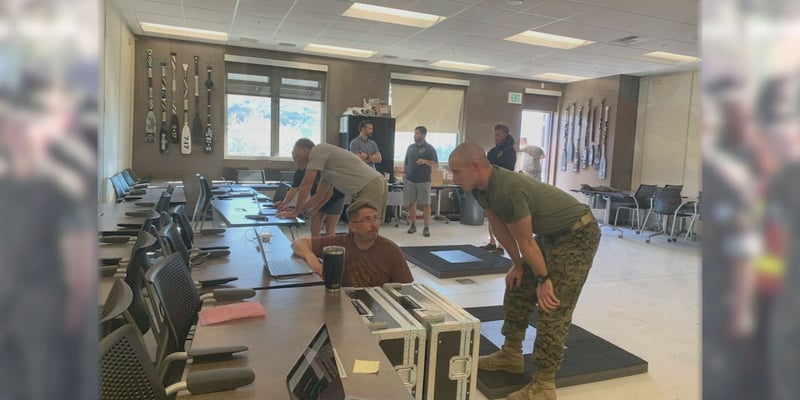
By Alana Austin
WASHINGTON (Gray DC) – The U.S. military is expanding efforts to prevent injuries among service members. Through new advanced technology, the goal is to maximize military readiness and reduce the injuries that keep warriors off the battlefield.
“In my mind, this was really a game-changer,” said U.S. Marine Corps Col. Stephen Armes (Ret.).
When Armes took over the Marine Corps Human Performance Division, he was alarmed at how many Marines – especially women – in Officer Candidate School (OCS) dropped out due to injuries. Armes says, as of 2019, the historical average was a 50% drop at OCS for women, with lower extremity injuries accounting for a large portion of that rate. Armes made it his mission to change that by deploying force plate technology, developed by Sparta Science.
“It’s probably one of the biggest revolutions that we’ve had on the fitness side, the holistic human performance side in the Marine Corps,” said Armes.
The force plates started as a pilot program, but in the latest National Defense Authorization Act, Congress approved more funding so this technology is available to thousands of war-fighters across the branches. The Marine recruit depots at Parris Island and San Diego are leveraging Sparta Science to reduce injury risks with recruits, officer candidates, and drill instructor students.
“They’re a high-powered bathroom scale in that they’re gathering thousands of data points a second as you balance or as you jump,” said Dr. Phil Wagner, CEO and Founder of Sparta Science.
These force plates help service members customize workout plans to build up areas of vulnerability.
“So, how can we provide insights, not only to leadership, but to this new generation of war-fighter who wants that digital engagement and that information about themselves. ‘How can I individually learn how I move and take that information to change and refine my habits?’” Wagner explained.
A recent report by Walter Reed and the Uniformed Services University of Health Sciences found that 3/4 of medically non-deployable service members are sidelined due to musculoskeletal injuries, many stemming from training and sports activities.
With 68,000 service members falling into that category each year, Walter Reed’s director of surgery, Dr. Benjamin Kyle Potter, says many warriors will recover and report back to their regular assignments. But the number of such cases poses a challenge in terms of disability claims, lost duty days, and stress on the military’s health care system.
“That’s just a tremendous global impact in terms of the composite fighting force and not being able to deploy,” said Dr. Benjamin Kyle Potter.
Potter says he’s hopeful efforts like the force plates will enhance military readiness by making incremental changes to training processes and retention levels.
“We’re not just talking about individuals who are ready, but units that can train together and then go fight together. The ability to have more of the team ready for the big game, so to speak, is huge,” said Potter.
The same report also found that musculoskeletal injuries sustained in a given year outnumber all combat-related injuries over the last two decades in Iraq and Afghanistan. But Potter says the research indicated combat-related injuries are also more survivable than ever before.